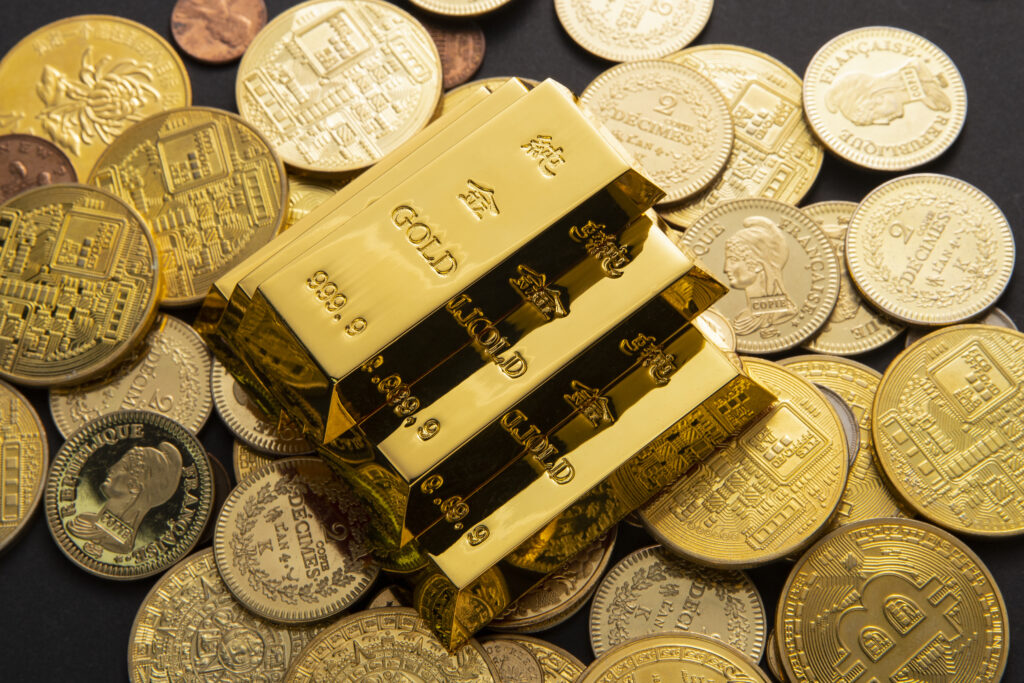Gold has long been considered a safe haven for investors, especially during times of economic uncertainty. In recent years, the price of gold has experienced significant fluctuations, capturing the attention of both seasoned investors and those new to the market. Understanding the factors driving the current rally in gold prices and what might be expected in the future is crucial for making informed investment decisions.
The Current Rally in Gold Prices
The price of gold has seen a remarkable rally over the past few years, reaching historic highs. Several factors have contributed to this upward trend, including:
1. Economic Uncertainty and Inflation Concerns
The global economy has faced unprecedented challenges in recent years, including the COVID-19 pandemic, geopolitical tensions, and supply chain disruptions. These factors have led to increased economic uncertainty, prompting investors to seek safe-haven assets like gold. Additionally, concerns about rising inflation have driven demand for gold as a hedge against the eroding value of fiat currencies.
2. Monetary Policy and Low Interest Rates
Central banks around the world have implemented aggressive monetary policies to support their economies during the pandemic. These policies include maintaining low interest rates and large-scale asset purchases. Low interest rates reduce the opportunity cost of holding non-yielding assets like gold, making it more attractive to investors. Moreover, expansive monetary policies can lead to currency depreciation, further boosting the appeal of gold.
3. Geopolitical Tensions
Geopolitical events, such as conflicts and trade wars, often lead to market volatility and economic instability. Investors turn to gold during these times as a store of value. Recent geopolitical tensions, including those between major economies like the United States and China, have contributed to the rally in gold prices.
4. Weakening US Dollar
Gold prices are inversely related to the value of the US dollar. When the dollar weakens, gold becomes cheaper for investors holding other currencies, thereby increasing demand. The US dollar has faced downward pressure due to a combination of factors, including expansive monetary policies and trade deficits, which have supported higher gold prices.
Factors Influencing Future Gold Prices
Predicting the future price of gold involves analyzing various economic indicators and global events. Here are some key factors that could influence gold prices in the coming years:
1. Inflation Trajectory
The trajectory of inflation will be a critical factor in determining gold prices. If inflation continues to rise, gold is likely to remain an attractive investment as a hedge against inflation. Conversely, if central banks successfully manage to control inflation, the demand for gold might weaken.
2. Central Bank Policies
Central bank policies, particularly those of the Federal Reserve, will play a significant role in shaping gold prices. If central banks start to tighten monetary policy by raising interest rates and reducing asset purchases, the appeal of gold could diminish. However, if they maintain accommodative policies, gold prices may continue to rise.
3. Economic Recovery
The pace and stability of the global economic recovery will also impact gold prices. A strong and sustained economic recovery might reduce the need for safe-haven investments like gold. On the other hand, if the recovery is slow or uneven, investors may continue to seek refuge in gold.
4. Geopolitical Developments
Ongoing and future geopolitical developments will influence gold prices. Any escalation in geopolitical tensions or new conflicts could drive demand for gold. Investors should closely monitor geopolitical events and their potential impact on the global economy.
5. Currency Fluctuations
The value of major currencies, particularly the US dollar, will affect gold prices. Continued weakness in the dollar will likely support higher gold prices, while a stronger dollar could put downward pressure on gold.
Investment Strategies for Gold
Given the current rally and future uncertainties, investors should consider various strategies for investing in gold:
1. Physical Gold
Investing in physical gold, such as gold bullion or coins, is a traditional and straightforward way to gain exposure to gold. Physical gold provides a tangible asset that can be stored securely. However, investors should consider storage costs and insurance.
2. Gold ETFs and Mutual Funds
Gold exchange-traded funds (ETFs) and mutual funds offer a convenient way to invest in gold without the need for physical storage. These financial instruments track the price of gold and can be bought and sold like stocks. They provide liquidity and diversification benefits.
3. Gold Mining Stocks
Investing in gold mining companies can offer leveraged exposure to gold prices. When gold prices rise, the profitability of mining companies typically increases, leading to higher stock prices. However, this strategy carries additional risks related to the operational performance of the mining companies.
4. Gold Futures and Options
Gold futures and options provide a way to speculate on the future price of gold. These financial derivatives allow investors to take leveraged positions, potentially leading to significant gains. However, they also involve higher risk and require a good understanding of the market.
5. Diversified Portfolio
A diversified investment portfolio that includes a mix of gold and other asset classes can help mitigate risk. By spreading investments across various assets, investors can reduce their exposure to the volatility of any single asset class.
Conclusion
The current rally in gold prices is driven by a combination of economic uncertainty, inflation concerns, accommodative monetary policies, geopolitical tensions, and a weakening US dollar. While predicting future gold prices is challenging, key factors such as inflation trajectory, central bank policies, economic recovery, geopolitical developments, and currency fluctuations will play crucial roles.
Investors should carefully consider their investment strategies, balancing the potential benefits of gold as a safe-haven asset against the risks and opportunities in the broader market. Whether through physical gold, ETFs, mining stocks, futures, or a diversified portfolio, staying informed and adaptable will be essential in navigating the dynamic gold market.
—
FAQ
Q1: What is driving the current rally in gold prices?
The current rally in gold prices is driven by economic uncertainty, inflation concerns, accommodative monetary policies, geopolitical tensions, and a weakening US dollar. These factors have increased demand for gold as a safe-haven asset.
Q2: How do central bank policies affect gold prices?
Central bank policies, particularly those involving interest rates and asset purchases, significantly impact gold prices. Low interest rates and expansive monetary policies reduce the opportunity cost of holding gold and can lead to currency depreciation, both of which support higher gold prices.
Q3: What role does inflation play in gold prices?
Inflation affects gold prices by eroding the value of fiat currencies. Gold is often seen as a hedge against inflation, so rising inflation typically increases demand for gold, driving up its price.
Q4: How do geopolitical tensions influence gold prices?
Geopolitical tensions create market volatility and economic instability, prompting investors to seek safe-haven assets like gold. Increased geopolitical risks can drive up gold prices as investors look for secure stores of value.
Q5: What investment strategies can be used for gold?
Investment strategies for gold include purchasing physical gold, investing in gold ETFs and mutual funds, buying gold mining stocks, trading gold futures and options, and including gold as part of a diversified investment portfolio.
Q6: What are the risks of investing in gold mining stocks?
Investing in gold mining stocks carries risks related to the operational performance of the mining companies, such as production costs, regulatory issues, and management effectiveness. These factors can affect the stock price independently of gold prices.
Q7: How does the US dollar impact gold prices?
Gold prices are inversely related to the value of the US dollar. A weakening US dollar makes gold cheaper for investors holding other currencies, increasing demand and driving up gold prices. Conversely, a stronger dollar can put downward pressure on gold prices.
Q8: What should investors consider when adding gold to their portfolio?
Investors should consider their investment goals, risk tolerance, and the potential benefits of gold as a safe-haven asset. Balancing gold investments with other asset classes in a diversified portfolio can help mitigate risk and enhance returns.


